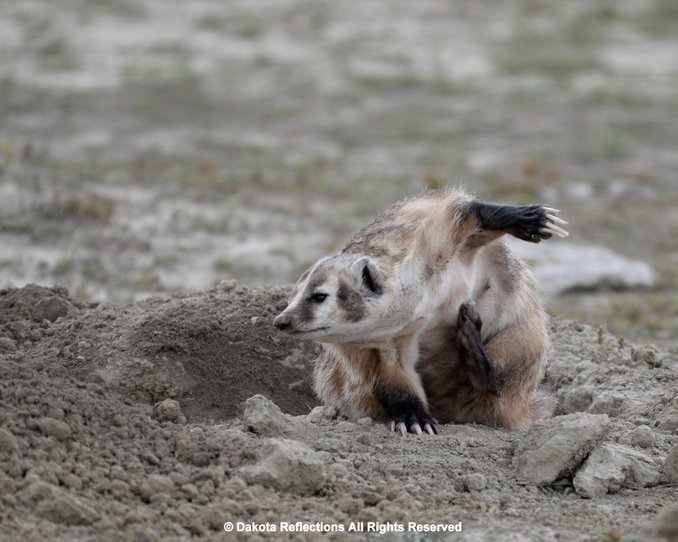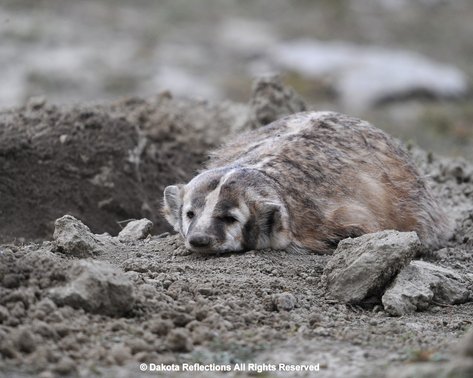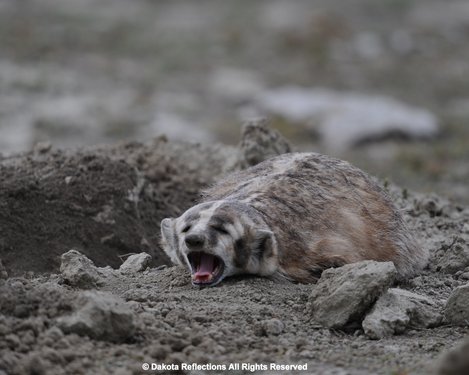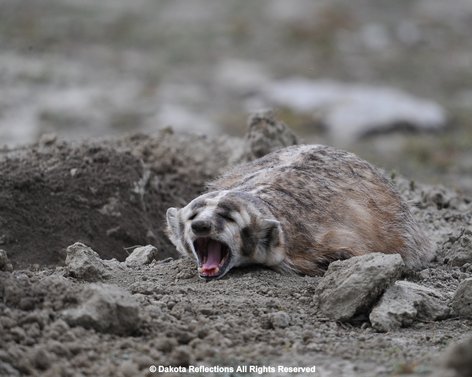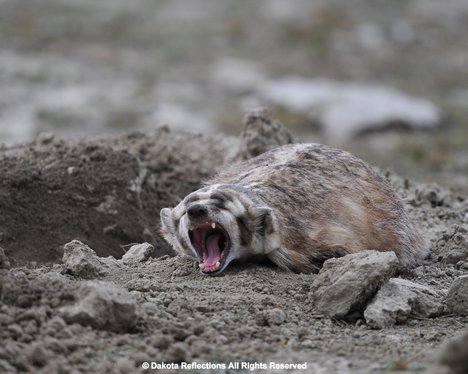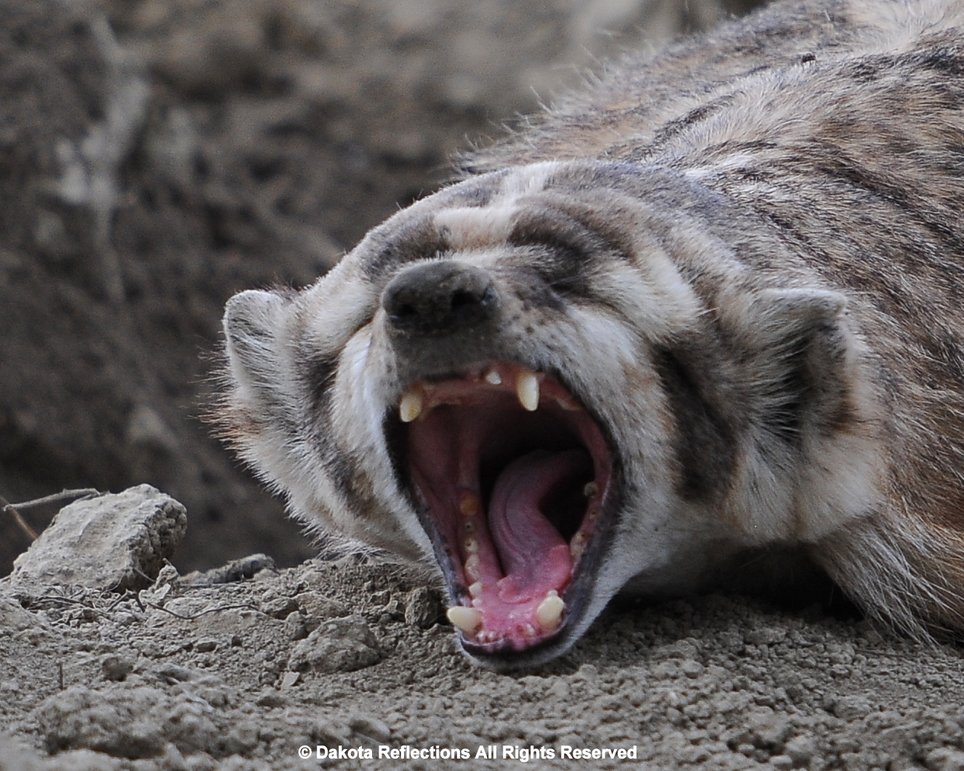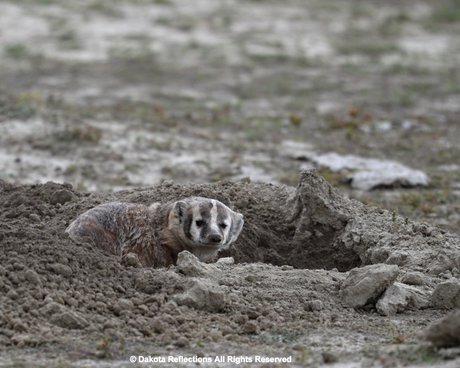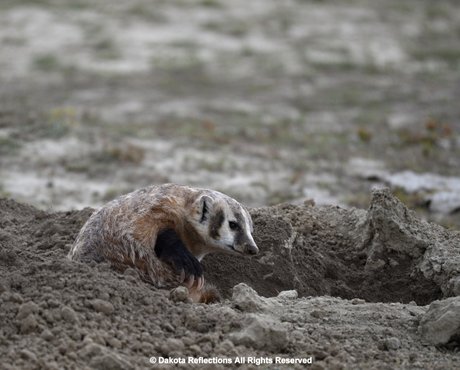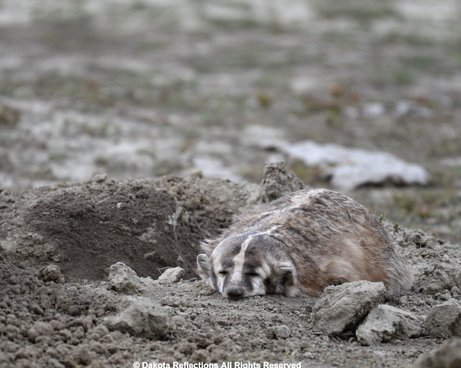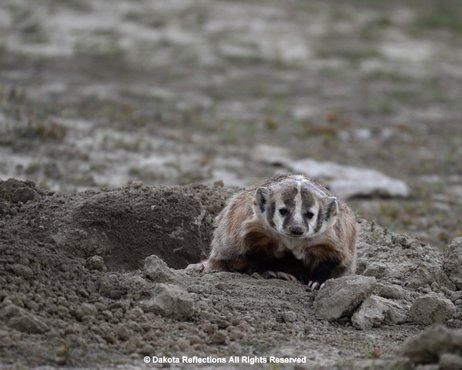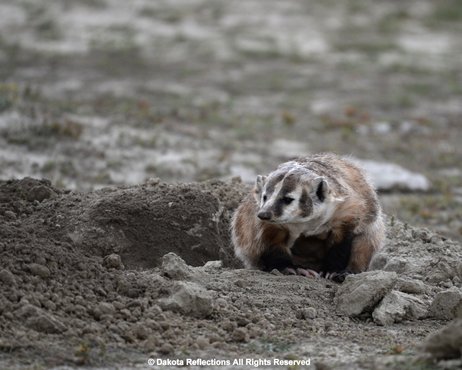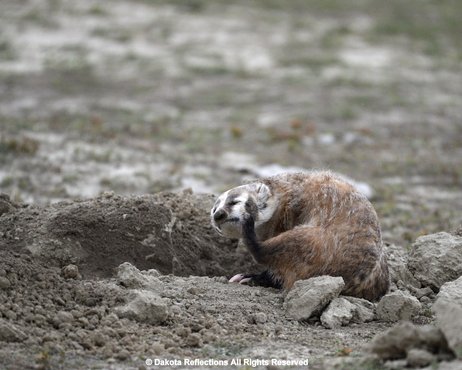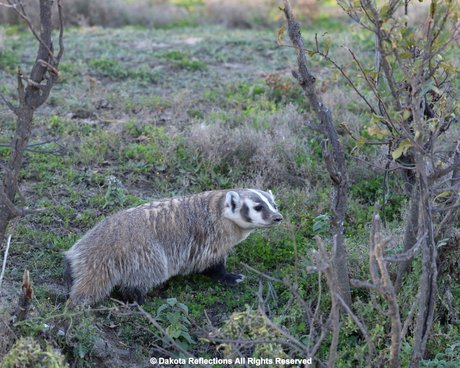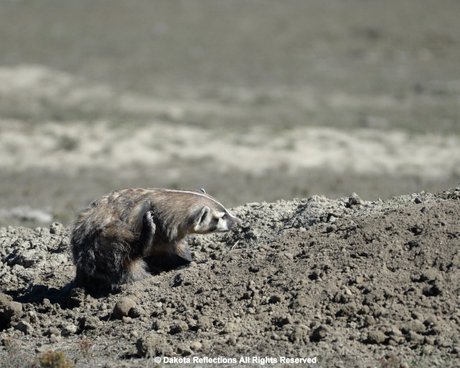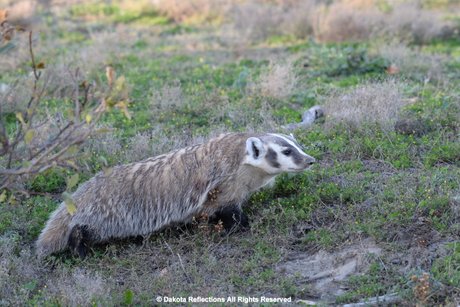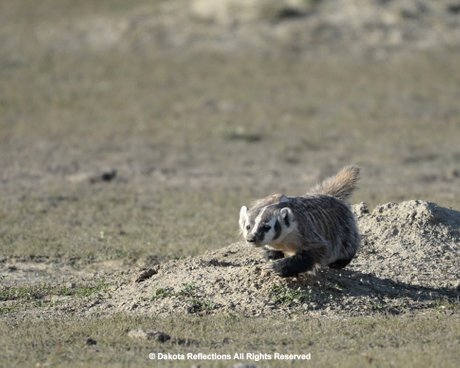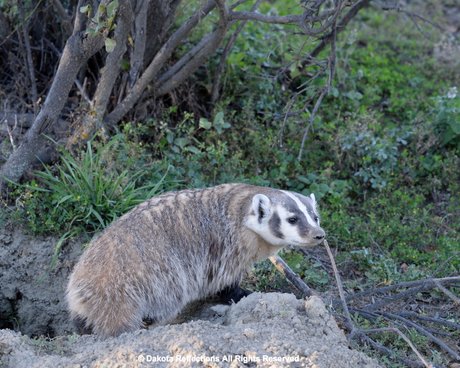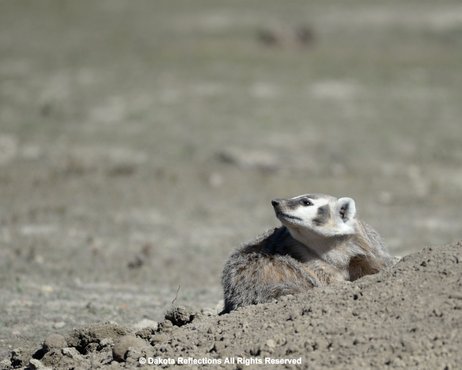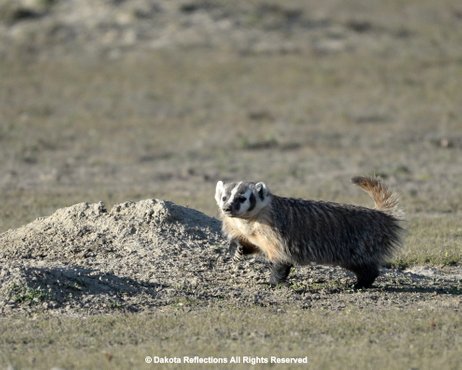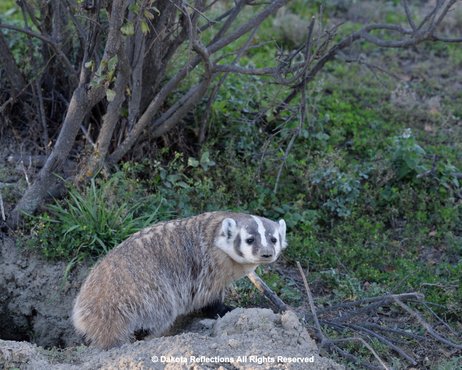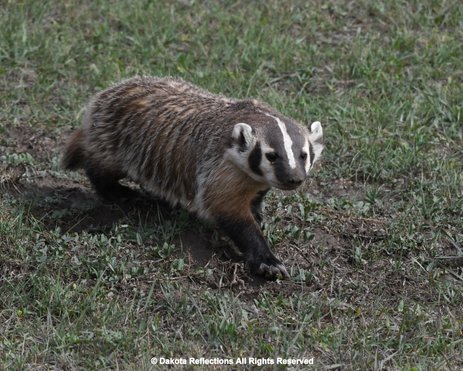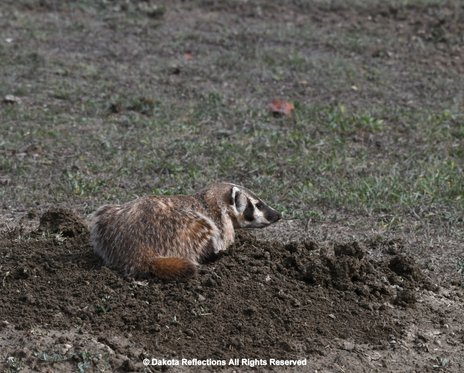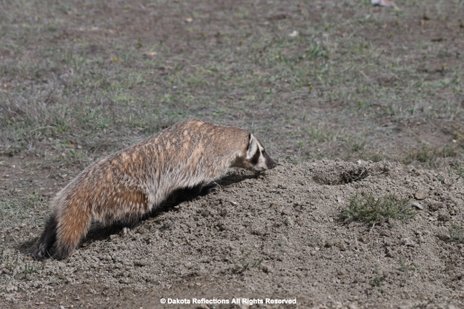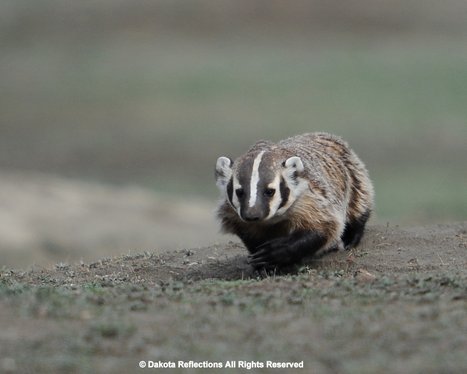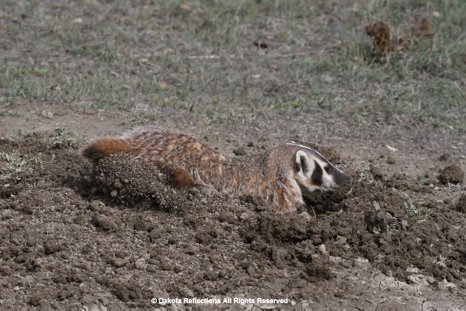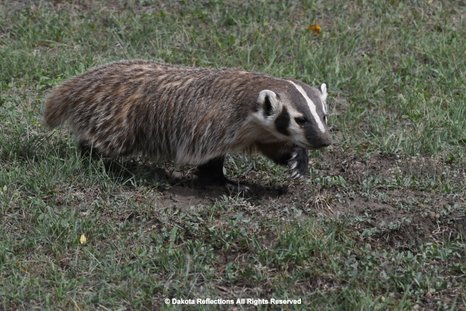Dakota Reflections
Badgers are common in North Dakota but I have rarely seen them, usually the badger quickly crosses the road ahead of me and disappears in the brush. The are more likely to be seen in prairie regions. When they move, they look like a walking rug because their body shape is so, so flat. They dig a den to rest during the day and rarely use the den twice, constantly on the move. Finding this badger out during the day was a treat.
Badger Fun Facts
- They are found in western and central United States, south central Canada and northern Mexico
- The badger's cousins include the wolverine, ferret, otter and weasel
- The black patches on their cheeks "badges" are the source of its name
- Babies are born in March/April and they are blind for 4 to 6 weeks, they grow quickly and are independent by the end of summer
- During the winter, badgers often use just one den but during the summer, a different den may be used each night, mom badgers make complex dens with multiple entrances
Big yawn!
Badgers can live up to 12 years. Badgers prefer sandy soil so they can dig their dens. They can see, hear and smell very well. They have 34 teeth. Badger dens can be 6 to 8 feet deep and be 20 to 30 feet long. Coyotes will occassionally hunt with badgers and chase prairie dogs above ground while the badger hunts prairie dogs in their tunnels. Badgers do not hibernate but do sleep alot during the winter. They average 3 in a litter.
Got to scratch, I have an itch!
Sniff! I wonder, is a prairie dog home?
Badgers are found throughout North Dakota, but you are more likely to see then on the prairies, if you ever get to see them. They are between 1 1/2 to 3 feet long and can weigh 10 to 25 pounds. They are usually seen alone unless breeding or moms feeding young. They eat small rodents, reptiles and insects. They move freqently during the summer, often digging a den every night to rest during the day.
American Badger Quiz (answers are below, there is one incorrect answer in each question)
1. Badgers eat the following as part of their diet?
a. Pocket gophers, ground squirrels, prairie dogs
b. Birds
c. Snakes
d. Toads and frogs
e. Coyottes
2. Which facts are accurate in pertaining to badger reproduction?
a. Average litter size is 5
b. Mating occurs in summer in fall
c. Delayed implantation occurs in February
d. After 5 weeks gestation, cubs are born in March or April
e. Cubs eyes are open in 4 to 6 weeks and they begin to emerge from den at 6 weeks of age
3. Which facts are accurate in regards to adult badgers?
a. Some badgers can live to 12 -14 years
b. Most badgers don't live much longer than 2 years
c. Badgers sleep through most of the winter but do not hibernate
d. Badgers have a nictitating member that helps protect their eyes
e. Badgers need to sharpen their teeth on rocks
4. How is the noun and verb badger used in conversation?
a. A badger is a resident of Wisconsin
b. To badger is to be to harass or annoy persistently and refers to badger-baiting, a cruel betting activitiy of dogs fighting badgers, outlawed in England by the Cruelty to Animals Act 1835
c. A badger is a resident of Minnesota
d. Badger is the name of a badger's fur
e. Badger is the name of swab tool for cleaning mortar from newly laid tile drains
Did you know these badger family terms?
- Male badger is a boar
- Female badger is a sow
- Young badger is a cub
- Group of badgers is a cete
- Badger colonies are called clans
- Badger's home is called a sett.
Answers
1. All are right except e- badgers and coyottes occasionally cooperate and hunt together.
2. All are right except a- they average 3 in a litter.
3. All are right except e- their teeth are self sharpening.
4. All are right except c- Minnesotans are called gophers.

